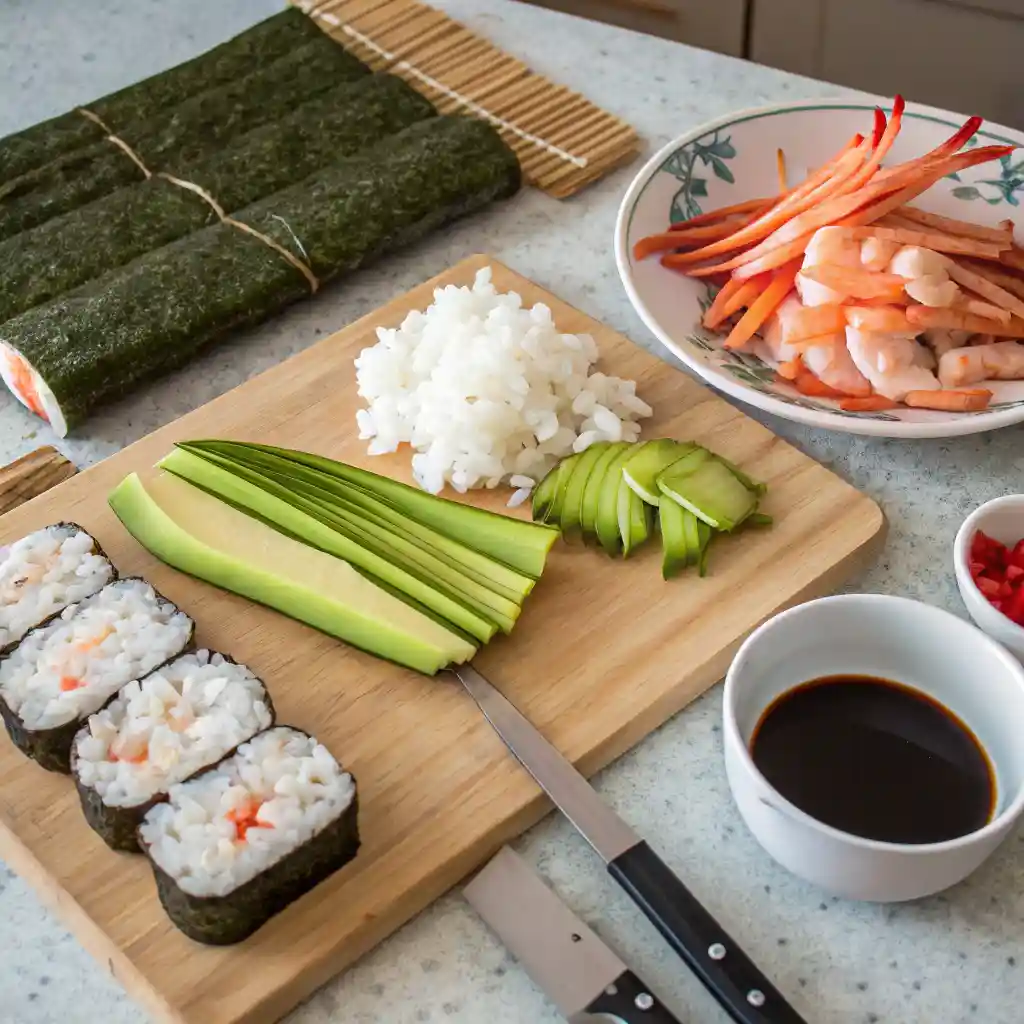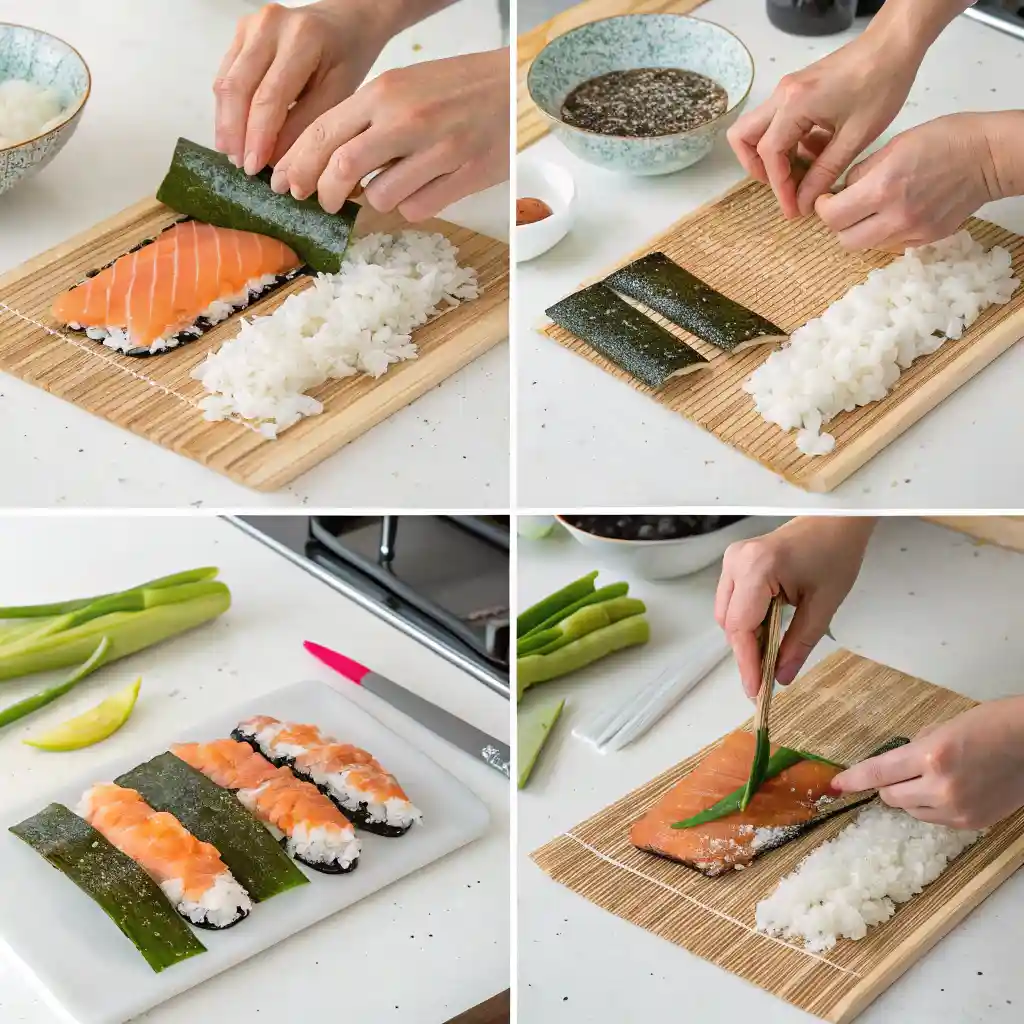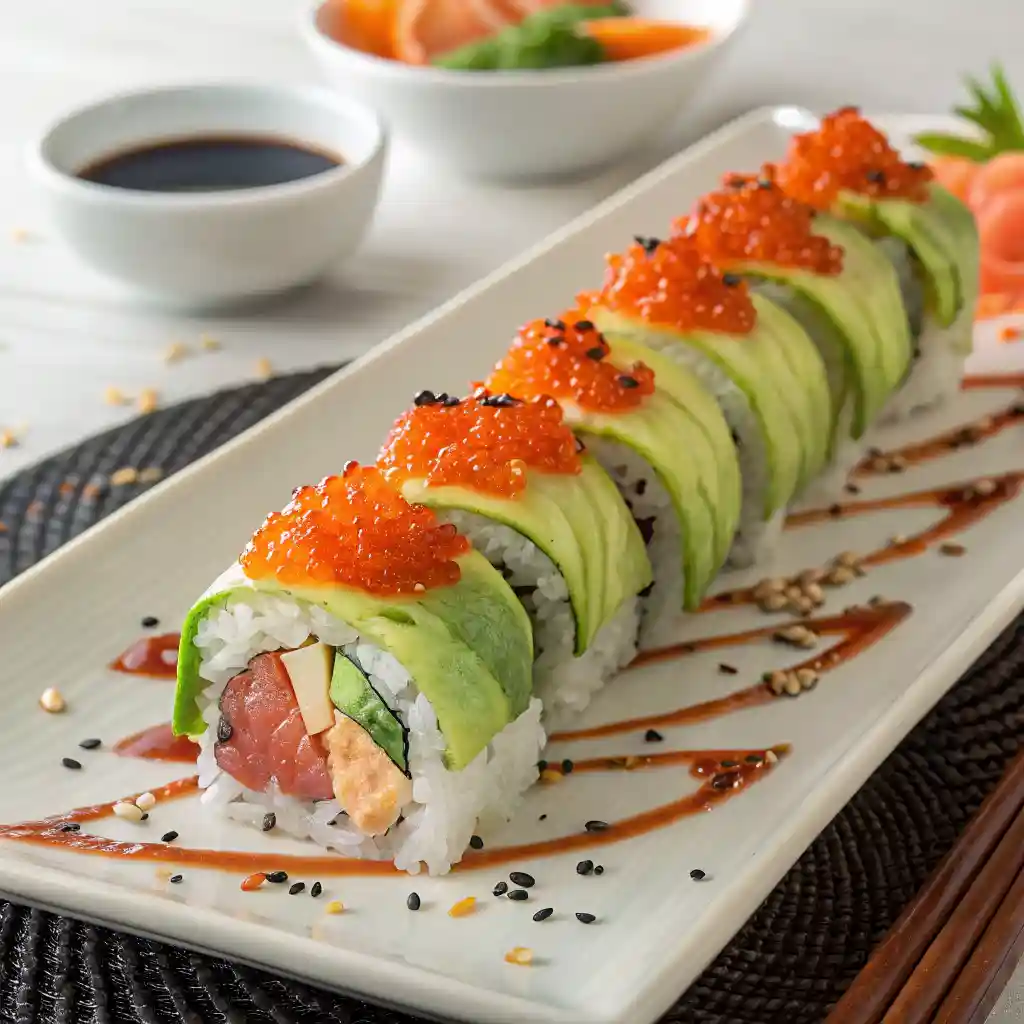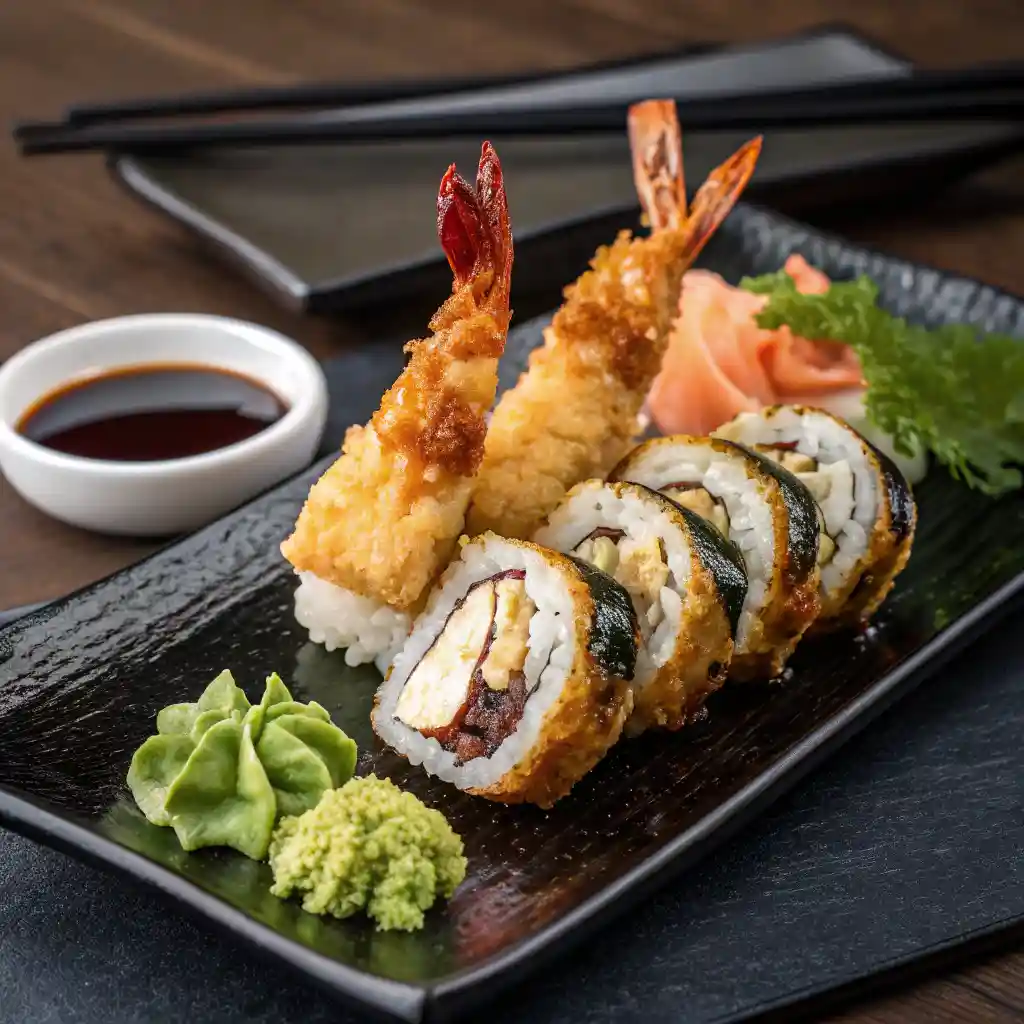Creating a delicious dragon roll at home can be a rewarding culinary adventure. Celebrated for its eye-catching appearance and rich flavors, the dragon roll has become a favorite among sushi enthusiasts worldwide. This article will guide you through the process of making a dragon roll, including its components, ingredients like thinly sliced avocado, and the necessary techniques to achieve a perfect sushi roll.
Table of Contents
What is a Dragon Roll?
Popular Variations of Dragon Roll Sushi
While the classic dragon roll is widely adored, numerous variations exist, each adding its twist to this popular sushi option, such as the addition of thinly sliced avocado or cucumber strips. Some sushi chefs creatively incorporate different types of fish, such as tuna or salmon, along with the traditional shrimp tempura and eel. Others may substitute the eel with cooked crab or even incorporate spicy mayonnaise to enhance the flavor profile. These variations allow for customization, catering to diverse palates and preferences.
Moreover, adventurous sushi lovers often experiment with the toppings, adding elements such as spicy tuna, frozen shrimp tempura, or tempura flakes for an extra crunch. In some variations, the avocado is blended with other ingredients, like wasabi or creamy sauces, to create a unique dipping experience. Regardless of the variation, the dragon roll remains a symbol of creativity in sushi making, inviting enthusiasts to explore new flavors while maintaining its signature appearance and taste, often enhanced by ingredients like Persian cucumbers.
Why is Dragon Roll Sushi So Popular?
Dragon roll sushi owes its popularity to its visually striking presentation and the harmonious blend of flavors it offers. The visual allure of the dragon roll, with its vibrant colors and intricate layering, makes it a standout choice on any sushi menu. This sushi roll also offers a harmonious blend of textures – the crunchiness of shrimp tempura, the creaminess of avocado, and the savory richness of eel create a satisfying bite for sushi lovers.
Additionally, the versatility of the dragon roll allows it to cater to a wide range of tastes, making it a go-to option for both sushi novices and connoisseurs alike. Its combination of cooked and raw ingredients, including tempura shrimp, appeals to those who may be hesitant to try traditional sushi with raw fish. Furthermore, the ubiquitous nature of the dragon roll in sushi restaurants worldwide has solidified its status as a beloved staple in the sushi community. As a result, it continues to be a favorite among diners looking for a delicious and visually stunning sushi experience.

What Ingredients Do You Need for a Dragon Roll?
Essential Ingredients: Sushi Rice and Nori
The foundation of any sushi roll, including the dragon roll, is high-quality sushi rice and nori. Sushi rice, typically short-grain, is sticky and slightly sweet, which helps it hold together when rolled. Thoroughly rinsing the rice before cooking is crucial to eliminate excess starch and achieve the ideal texture. After cooking, the rice should be seasoned with sushi vinegar, which adds a slightly tangy flavor that enhances the overall taste of the roll.
Nori sheets are the next crucial ingredient; these seaweed sheets provide structure and flavor to the roll. When selecting nori, look for high-quality sheets that are dark green and shiny. Avoid any that are dull or brittle, as they may not hold up well during the rolling process. With the right sushi rice and nori sheets, you will have a solid base for your dragon roll, setting the stage for adding delicious fillings like frozen shrimp tempura and toppings like Japanese mayo.
Key Fillings: Shrimp Tempura and Eel
The key fillings in a dragon roll often include shrimp tempura and eel, which contribute rich flavors and textures. The shrimp tempura, which can be made from scratch or bought frozen, adds a delightful crunch to the roll. It is typically prepared by dipping shrimp in a light batter and frying until golden brown. If making your own tempura, the tempura recipe usually involves a simple mixture of flour, cornstarch, and cold water for a light and crispy coating.
Eel, or unagi, is another essential component that brings a savory depth to the dragon roll. It is often grilled and glazed with a sweet soy-based unagi sauce, which enhances its flavor profile significantly in an american-style sushi dish. When preparing your dragon roll, layering these fillings alongside fresh cucumber and creamy avocado will create a balanced and exciting taste experience. The combination of crunchy tempura and the rich, savory eel will ensure that every bite is a delightful adventure.
Finishing Touches: Avocado and Tobiko
To elevate your dragon roll, finishing touches such as avocado slices and tobiko are crucial. Sliced avocado adds a creamy texture that beautifully complements the crunch of the shrimp tempura and the savory eel. When selecting avocado, look for ripe ones that yield slightly when pressed but are not overly soft to enhance your sushi at home. Thin slices of avocado can be layered on top of the roll, creating a stunning visual effect that enhances the overall presentation, especially when paired with cucumber strips.
Tobiko, also known as fish roe, serves as a vibrant garnish that brings both color and a flavorful punch to the roll. Its slightly salty and sweet taste pairs well with the other ingredients, making it a popular choice for sushi rolls. Sprinkling black sesame seeds on top can also enhance the visual appeal and provide a nutty flavor. Together, these finishing touches transform your dragon roll into a work of art, making it not only delicious but also visually captivating.

How to Make a Dragon Roll at Home
Gathering Ingredients for Your Dragon Roll Recipe
To successfully make a dragon roll at home, gathering the right ingredients is paramount. Key components include sushi rice, nori sheets, and shrimp tempura, which can be homemade or purchased frozen. Fresh vegetables like cucumber and avocado slices are also essential, as they lend freshness and flavor to the roll. Additionally, eel or unagi sauce can elevate the taste, while sesame seeds offer a delightful finishing touch for sushi at home. You can find most of these ingredients at your local grocery store or an Asian market, making it accessible for home cooks.
When selecting your ingredients, prioritize freshness, especially for the vegetables and seafood. If you’re opting for a homemade shrimp tempura, a simple tempura recipe can be found online, which typically involves battering and frying shrimp to achieve a crispy texture. As you gather your ingredients, consider the presentation as well; high-quality avocado and perfectly cooked sushi rice will make a significant difference in the final product. With everything ready, you’ll be well-prepared to embark on your sushi-making journey!
Step-by-Step Guide to Sushi Making
Making a dragon roll involves a series of steps that require attention to detail and a bit of practice. Start by preparing your sushi rice according to your chosen sushi recipe, ensuring it is seasoned with sushi vinegar to achieve the right flavor. Once the rice is ready, lay a nori sheet on your bamboo sushi mat and spread an even layer of rice over it, leaving a small border at the top. This allows for easy rolling and sealing of the sushi roll.
Next, add your fillings of shrimp tempura, cucumber, and eel in a line across the center of the rice. Gently lift the bamboo mat and begin rolling the sushi away from you, pressing lightly to maintain a firm and even shape. Once you reach the exposed edge of the nori, moisten it with a little water to help seal the roll, ensuring it stays intact while you squeeze the roll. Carefully roll it to completion, and with a sharp knife, slice the roll into bite-sized pieces. Making sushi can be a fun process, and with each attempt, you’ll become more skilled at achieving the perfect dragon roll.
Tips for Rolling the Perfect Dragon Roll
Achieving the perfect dragon roll requires practice and a few helpful tips to refine your technique. First, ensure your sushi rice is at the right temperature; it should be warm but not hot to the touch. This helps the rice stick together without becoming mushy. Additionally, using a bamboo mat is crucial for rolling; it provides the necessary support to shape the sushi roll evenly. Placing a sheet of plastic wrap on the mat before laying the nori can also facilitate easier rolling and prevent sticking.
When it comes to adding fillings, be mindful not to overstuff the roll. Overfilling the roll can cause it to tear or result in an uneven shape. Instead, aim for a balance of ingredients, ensuring flavors complement each other. Lastly, how you slice the roll is important—use a sharp knife and make precise cuts to avoid flattening it, especially after wrapping it in plastic. With these tips, you’ll be well on your way to making a stunning and delicious dragon roll that impresses family and friends alike, especially when topped with Japanese mayonnaise.

How to Prepare Sushi Rice for Your Dragon Roll
Choosing the Right Rice for Sushi Making
Choosing the right rice is critical when preparing sushi, particularly for your dragon roll. Short-grain sushi rice is the ideal choice because it has the right amount of starch, allowing it to become sticky when cooked. This stickiness is essential for rolling sushi, as it helps the rice adhere to itself and the nori, preventing the roll from falling apart and allowing you to squeeze the roll tightly. When shopping, look for rice labeled specifically for sushi or short-grain rice that is known for its ability to hold together when making sushi rolls, including maki rolls.
Once you’ve chosen your rice, it’s important to rinse it thoroughly before cooking to remove excess starch that can cause the rice to become gummy and affect your sushi at home. The correct method is to rinse the rice under cold water until the water becomes clear. After rinsing, letting the rice soak for about 30 minutes can enhance its cooking properties, resulting in perfectly tender sushi rice. With the right rice selection and preparation, you will create a solid base for your dragon roll.
How to Season Sushi Rice with Sushi Vinegar
Adding sushi vinegar to the rice is a vital step that boosts both the flavor and texture of your dragon roll. To make the seasoning, gently heat rice vinegar, sugar, and salt in a small saucepan over low heat, stirring until the sugar fully dissolves. The typical ratio is about 1 cup of rice vinegar to 1 tablespoon of sugar and salt each, but you can adjust these measurements based on your personal taste preferences.
Once your rice is cooked and still warm, transfer it to a large wooden or plastic bowl. Gradually pour the seasoned vinegar over the rice, using a wooden spatula to gently fold it in without crushing the grains when preparing sushi at home, especially for California rolls. The goal is to coat the rice evenly, allowing it to absorb the flavors while maintaining its texture. Allow the seasoned rice to cool to room temperature before using it to make your dragon roll, ensuring it maintains the perfect texture for rolling into 8 pieces. This step is key to creating a well-balanced flavor profile in your sushi.
Techniques for Cooking Perfect Sushi Rice
Cooking perfect sushi rice requires a few techniques to ensure the right texture and flavor, especially when using Japanese short-grain rice for maki rolls. Start by precisely measuring the rice and water—typically using a ratio of 1 cup of rice to 1.2 cups of water. Rinsing the rice thoroughly, as previously mentioned, is essential to remove excess starch from the japanese short-grain rice. After rinsing, let the rice soak for at least 30 minutes, which helps achieve an even texture during cooking of the japanese short-grain rice.
Using a rice cooker is often the best method for cooking sushi rice, as it regulates temperature and moisture levels perfectly. Once the rice is cooked, allow it to rest for about 10-15 minutes before fluffing it with a wooden spoon. This resting period helps the rice firm up, making it easier to work with when rolling your dragon roll. By mastering these techniques, you will consistently achieve perfectly cooked sushi rice, ensuring a delicious foundation for your dragon roll.

Dragon Roll Recipe
Method
- Prepare sushi rice according to your chosen sushi recipe, ensuring it is seasoned with sushi vinegar to achieve the right flavor.
- Lay a nori sheet on your bamboo sushi mat and spread an even layer of rice over it, leaving a small border at the top.
- Add your fillings of shrimp tempura, cucumber, and eel in a line across the center of the rice.
- Gently lift the bamboo mat and begin rolling the sushi away from you, pressing lightly to maintain a firm and even shape.
- Once you reach the exposed edge of the nori, moisten it with a little water to help seal the roll.
- "Carefully roll it to completion, and with a sharp knife, slice the roll into bite-sized pieces.
- Top with sliced avocado and tobiko. Sprinkle with black sesame seeds
